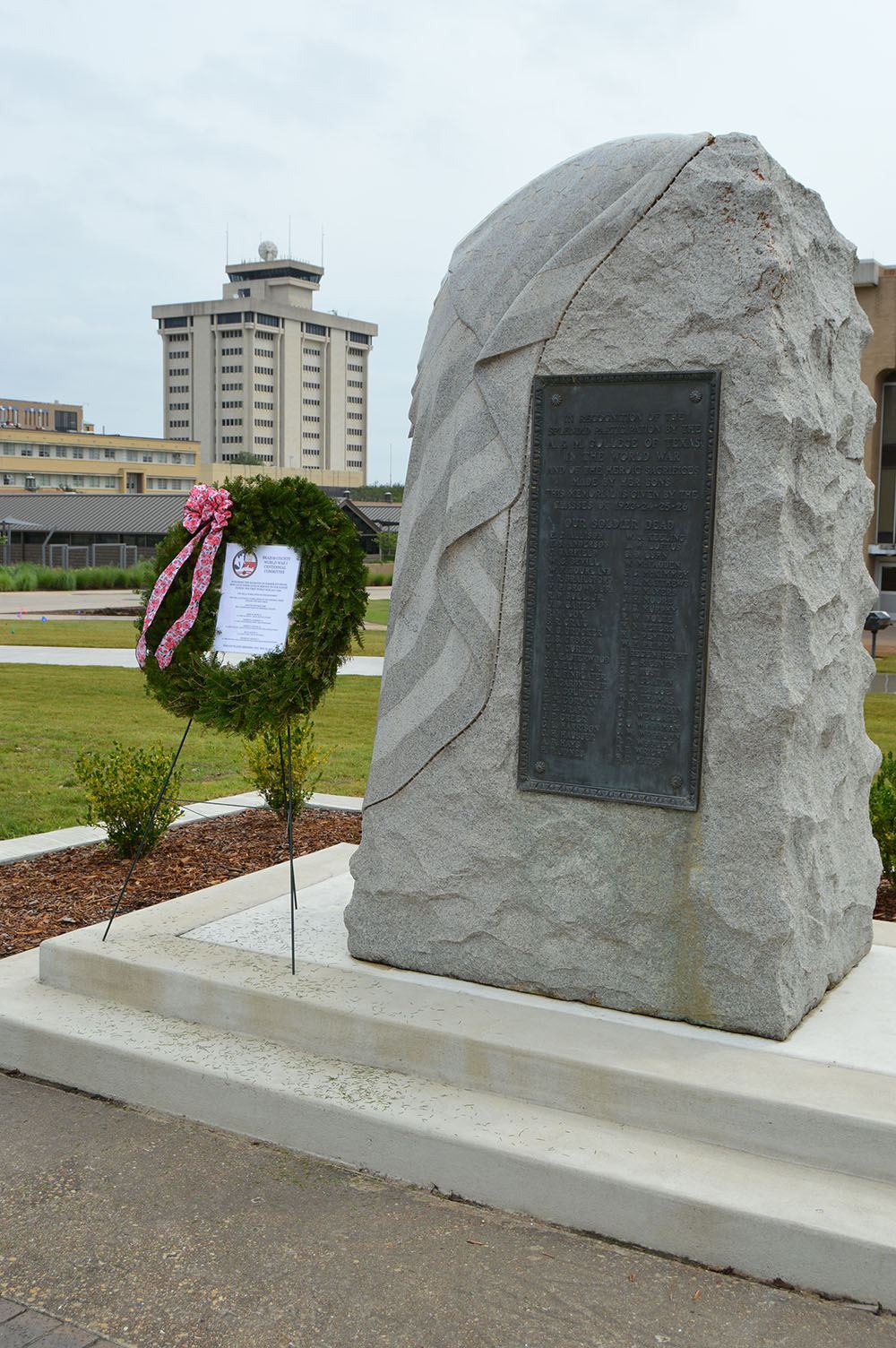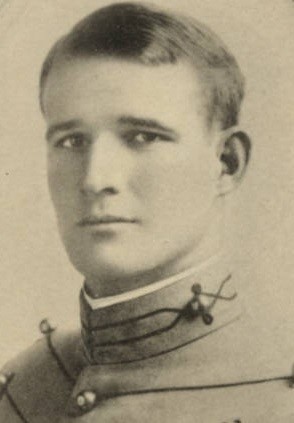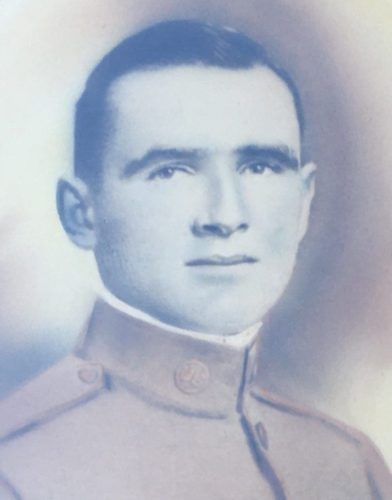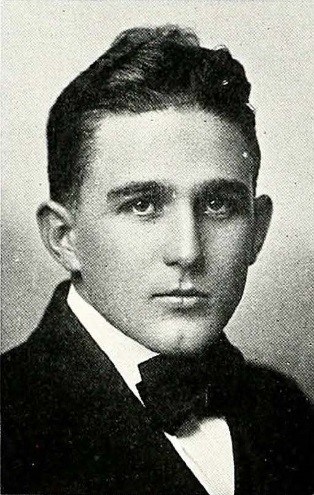Texas A&M University has long recognized the loss of 55 former students in the First World War, but recent research by members of the Brazos County World War I Centennial Committee has uncovered five additional students who died during the conflict, but whose names have never been included on any memorial. They include John W. Butts ’10 and Ira W. South ’17, both of Austin, Texas; Hubert R. Florence ’11 of Leesburg, Texas; Joseph Z. Sawyer ’16 of Clarendon, Texas; and George W. Splawn ’17 of Greenwood, Texas.
The Centennial of the First World War for the United States officially began on April 6 of this year—the day war was declared against Germany in 1917. Nearly five million Americans served with over 116,000 losing their lives. An armistice was announced for November 11, 1918; yet, the war did not officially end until the Treaty of Versailles was signed on June 28, 1919.
The Association of Former Students verified the men’s attendance at the university. Butt’s name surfaced during a research project concerning the Memorial Trees planted on the Simpson Drill Field. He was originally considered, but for some reason was discounted. An inquiry into why that occurred prompted further research on each case of the previously confirmed 55 students to determine what criteria was used at the time to classify them as “Gold Star” Aggies.
In 1918, a service flag, approximately 12 feet by 10 feet, was crafted by the university to honor all former students who were in service during the war. A maroon star identified that service, but the flag also featured 50 gold stars for those who had lost their lives.
The committee felt that Butts should have been included because he was killed in an airplane accident one month prior to Jesse Easterwood’s death, who is a Gold Star Aggie.
Butts attended Texas A&M from 1906 to 1909. He served on the First Battalion staff, as an officer of the senior class, yell leader and Ross Volunteer, and he earned a letter in baseball. Prior to graduation, Butts received an appointment to the U.S. Military Academy at West Point, where he graduated in 1914. Although commissioned a lieutenant in the cavalry, Butts became a pioneer in early military aviation and was eventually assigned as liaison officer for the air service with the training and instruction branch of the War College in Washington, D.C. He was killed while serving at Souther Field in Georgia on April 3, 1919.
Three of the former students, Florence, Sawyer and Splawn, were identified by committee member Bill Page ‘76, employee of the Sterling Evans Library. Known for his extensive research contributions to local history, Page was assisting with a possible future publication on Texas A&M’s role as a military training base during World War I when he discovered the fate of these men. It was a slow, tedious process comparing names from the yearbooks and catalogs against the service cards available for troops entering the military from Texas.
Florence was a student from 1907 to 1908 before returning home to work in his brother’s retail store in Leesburg, Texas. Drafted in 1918, Florence was assigned to the quartermaster corps and departed New York for France on September 30 of that year. Twelve days later, he died of complications from influenza while aboard the SS Caronia, and he was buried at sea.
Sawyer’s tenure as a student at Texas A&M occurred from 1912 to 1913. He enlisted at Fort Bliss in May 1917 and was with the first American troops to arrive in France. Serving with the 16th U.S. Infantry, Sawyer died from his wounds received during the fighting near Soissons, France on July 23, 1918.
Splawn, a native of Greenwood, Texas, attended the university from 1914 to 1916 where he was a member of Company I of the Third Battalion, Corps of Cadets. He later transferred to North Texas State Normal College at Denton, Texas, but was drafted in February 1918. By August of that year, Splawn was serving as a sergeant in the 90th Division, but died from his wounds received during the Meuse Argonne offensive on November 26, 1918—15 days following the armistice.
The fifth Aggie was discovered during a committee project to identify and record the experiences of all former students and Brazos County residents who served as U.S. Marines. South’s name appeared on a list of “A. & M. Men in the Service” published as a part of an Alumni Quarterly in 1918, printed before his death.
South studied at Texas A&M during the 1913–14 school year before transferring to the Rice Institute in Houston. He enlisted in the Marine Corps 17 days after war was declared and served as part of the Marine Barracks at Pensacola, Florida. Rising to the rank of sergeant, he was ordered to Norfolk, Virginia for non-commissioned officer training in August 1918, but died of pneumonia two months later in the naval hospital at Portsmouth.
This is not the first time that a change in the number of former students recognized by the university has happened. On February 26, 1920, 52 trees were planted around the drill field as a living memorial to honor each of the fallen sons of Aggieland. Four years later the War Memorial, often referred to as the West Gate Memorial, was dedicated and placed next to Guion Hall.
This monument, funded by the Classes of 1923, 1924, 1925, and 1926, features a bronze plaque listing 52 names, but they are not the same as the names for which the Memorial Trees were planted. It is believed that these two lists were combined and the three discrepancies were accepted into the record, resulting in the official list of 55 Gold Star Aggies.
The commemoration of the World War I Centennial prompted this research and the loss of these five additional Aggies signifies a much greater sacrifice by the student body of Texas A&M than previously known.
This past Memorial Day, a wreath was placed next to the War Memorial on the plaza adjacent to the Corps Arches at the front of the Quad on the campus of Texas A&M by members of the Brazos County World War I Centennial Committee. The ceremony, attended by more than 50 people, honored these five former students for the first time with the other 55 Aggies lost in the war.
###
Media contact: Greg Bailey, University Archivist at Cushing Memorial Library & Archives, at (979) 845-1951 or gtbailey@library.tamu.edu; or Elena Watts, Division of Marketing & Communications, at (979) 458-8412 or elenaw@tamu.edu, or
For more news about Texas A&M University, see https://today.tamu.edu/.
Follow us on Twitter at https://twitter.com/TAMU








